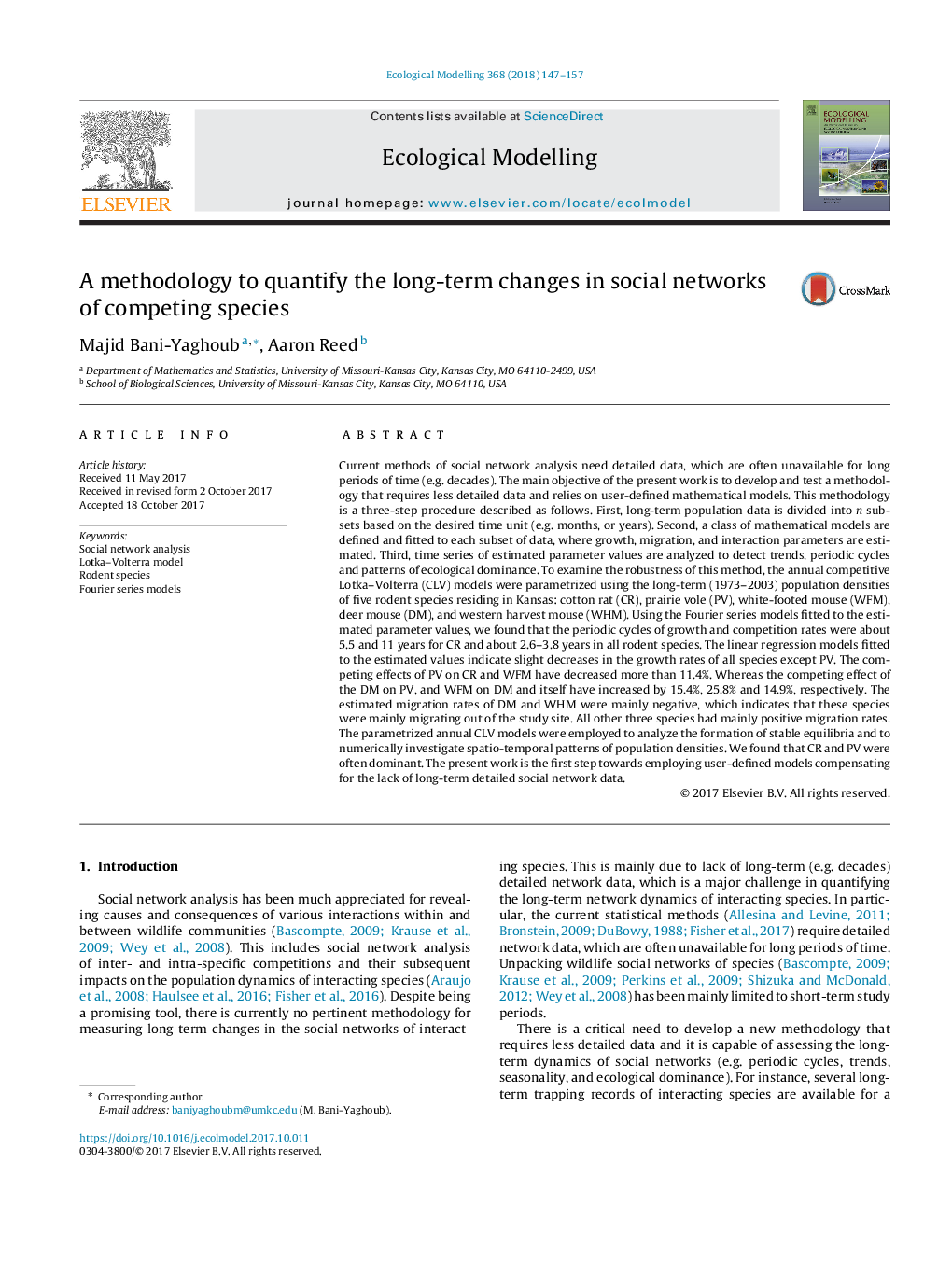| کد مقاله | کد نشریه | سال انتشار | مقاله انگلیسی | نسخه تمام متن |
|---|---|---|---|---|
| 8846138 | 1617379 | 2018 | 11 صفحه PDF | دانلود رایگان |
عنوان انگلیسی مقاله ISI
A methodology to quantify the long-term changes in social networks of competing species
ترجمه فارسی عنوان
یک روش برای اندازه گیری تغییرات درازمدت در شبکه های اجتماعی گونه های رقابتی
دانلود مقاله + سفارش ترجمه
دانلود مقاله ISI انگلیسی
رایگان برای ایرانیان
موضوعات مرتبط
علوم زیستی و بیوفناوری
علوم کشاورزی و بیولوژیک
بوم شناسی، تکامل، رفتار و سامانه شناسی
چکیده انگلیسی
Current methods of social network analysis need detailed data, which are often unavailable for long periods of time (e.g. decades). The main objective of the present work is to develop and test a methodology that requires less detailed data and relies on user-defined mathematical models. This methodology is a three-step procedure described as follows. First, long-term population data is divided into n subsets based on the desired time unit (e.g. months, or years). Second, a class of mathematical models are defined and fitted to each subset of data, where growth, migration, and interaction parameters are estimated. Third, time series of estimated parameter values are analyzed to detect trends, periodic cycles and patterns of ecological dominance. To examine the robustness of this method, the annual competitive Lotka-Volterra (CLV) models were parametrized using the long-term (1973-2003) population densities of five rodent species residing in Kansas: cotton rat (CR), prairie vole (PV), white-footed mouse (WFM), deer mouse (DM), and western harvest mouse (WHM). Using the Fourier series models fitted to the estimated parameter values, we found that the periodic cycles of growth and competition rates were about 5.5 and 11 years for CR and about 2.6-3.8 years in all rodent species. The linear regression models fitted to the estimated values indicate slight decreases in the growth rates of all species except PV. The competing effects of PV on CR and WFM have decreased more than 11.4%. Whereas the competing effect of the DM on PV, and WFM on DM and itself have increased by 15.4%, 25.8% and 14.9%, respectively. The estimated migration rates of DM and WHM were mainly negative, which indicates that these species were mainly migrating out of the study site. All other three species had mainly positive migration rates. The parametrized annual CLV models were employed to analyze the formation of stable equilibria and to numerically investigate spatio-temporal patterns of population densities. We found that CR and PV were often dominant. The present work is the first step towards employing user-defined models compensating for the lack of long-term detailed social network data.
ناشر
Database: Elsevier - ScienceDirect (ساینس دایرکت)
Journal: Ecological Modelling - Volume 368, 24 January 2018, Pages 147-157
Journal: Ecological Modelling - Volume 368, 24 January 2018, Pages 147-157
نویسندگان
Majid Bani-Yaghoub, Aaron Reed,
